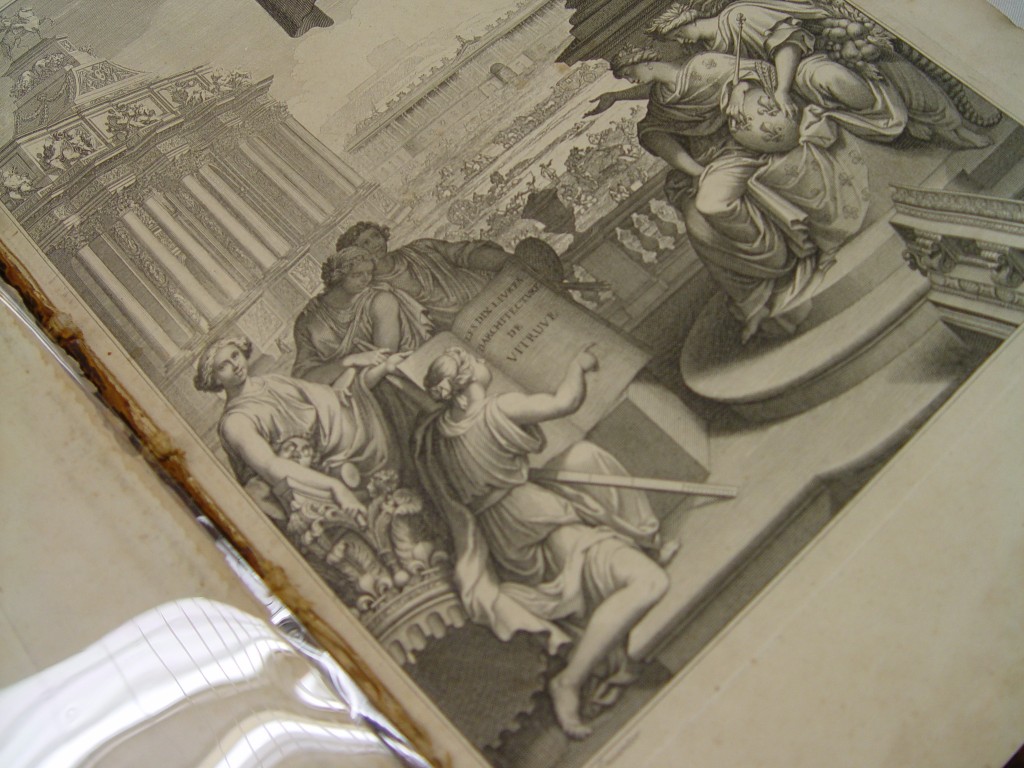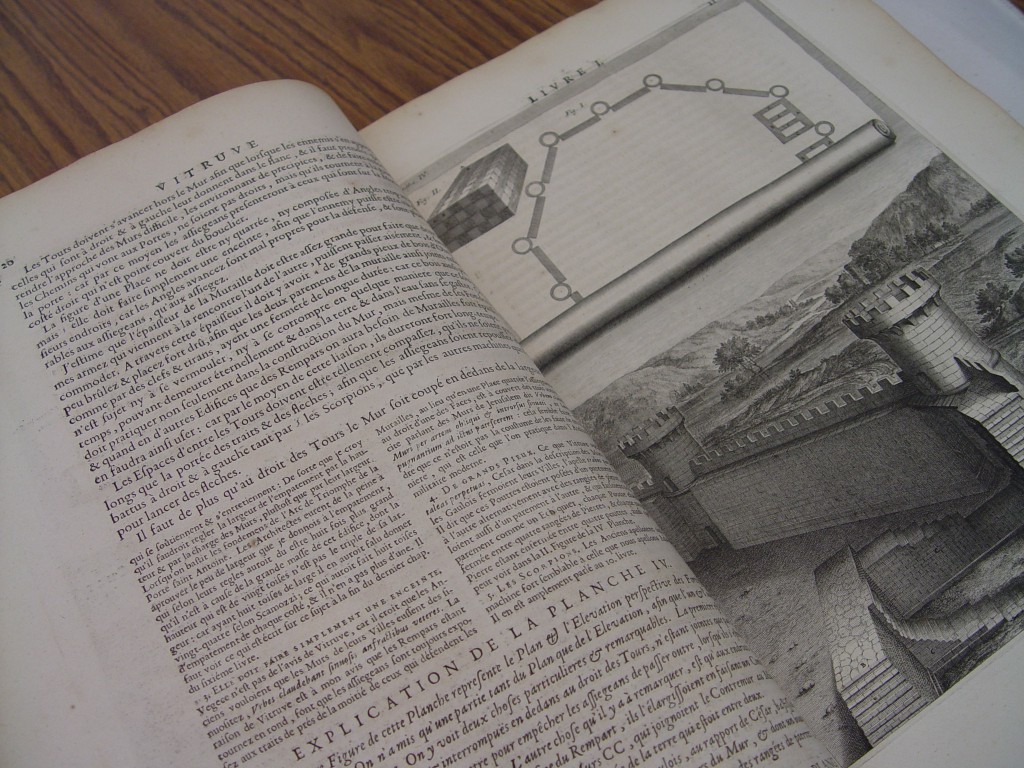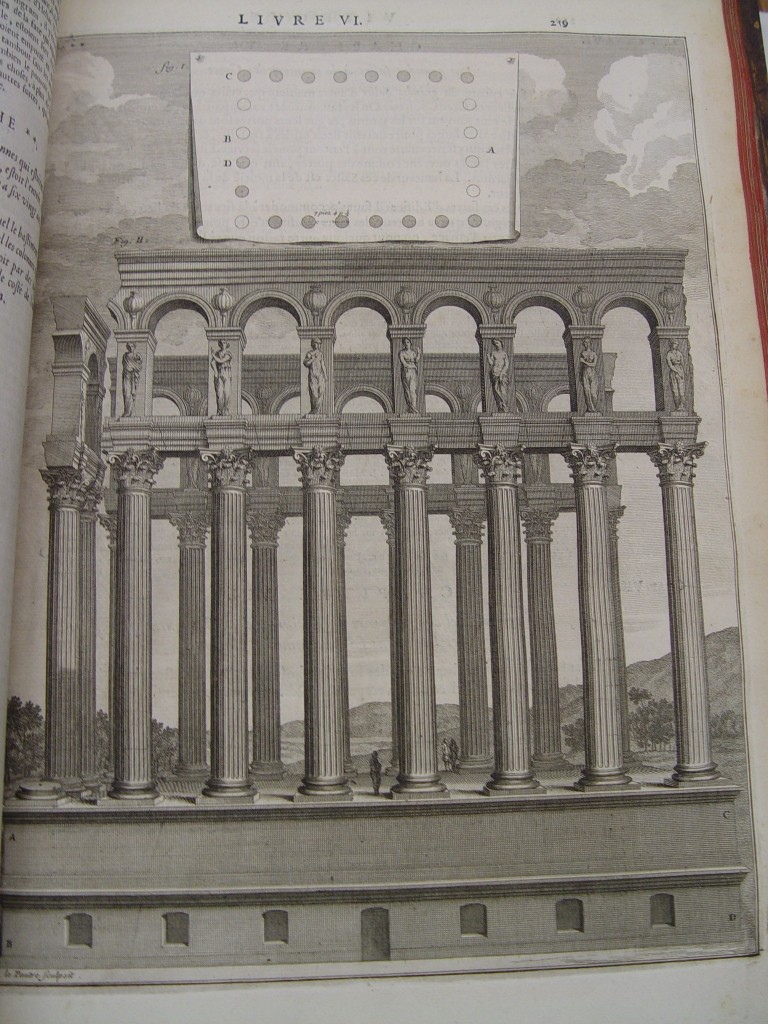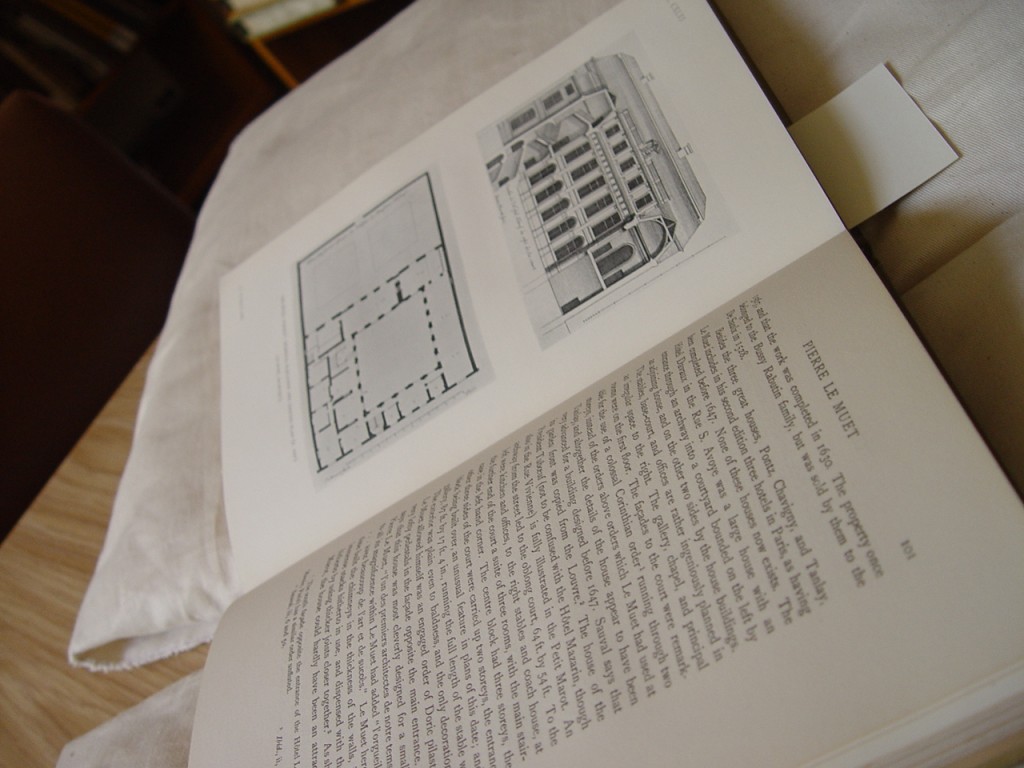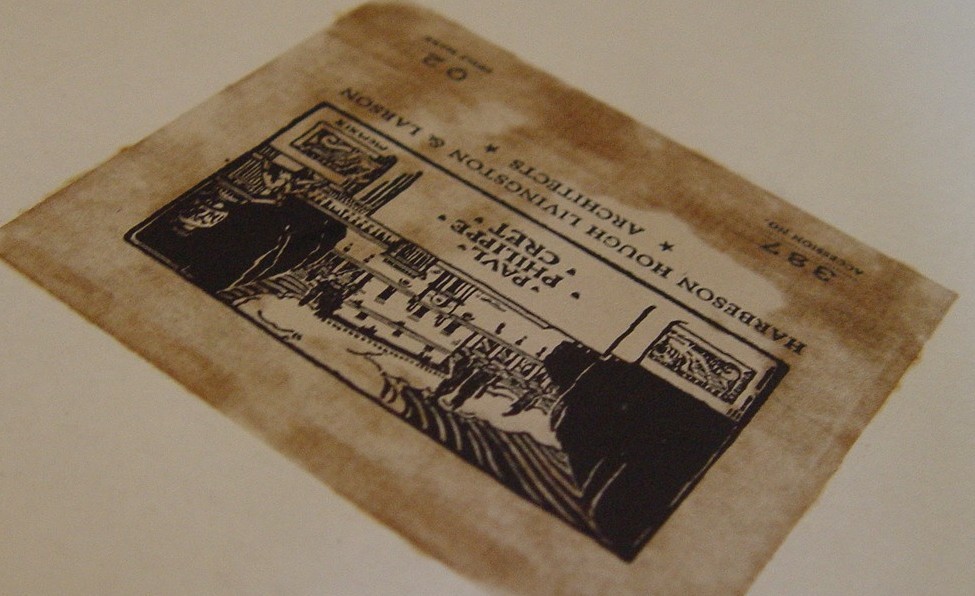Vitruvius. Les dix livres d’architecture de Vitruve. Paris: J. B. Coignard, 1684.
Collection: Paul Philippe Cret Library
In 1684, French anatomist and architect Claude Perrault published a corrected edition of his 1673 translation of Vitruvius’ De Architecture, a fragmented copy of which resides in the library of Paul Philippe Cret. This second edition deviates only slightly from the original publication, functioning to amend minor errors and provide augmented documentation of the ideals established by Vitruvius in his ten books. More importantly, this volume reaffirms a preoccupation with codifying an historicizing mode of architectural expression. Yet, while Perrault, whose design for the Louvre represents a rigorous transcription of 16th century classicism, exhibits a clear reverence for his Roman forebear, he also attempts to locate the trajectory of French architecture within the classical tradition. To that end, Perrault assumes Vitruvius into a specifically French discourse on architecture, constructing an explicitly French text that largely eschews the use of Latin or Italicizing verbiage and improves upon the copyists’ attempts to assign exemplary renderings to passages within the text. In this manner, Perrault establishes French classicism as a mode of architectural representation that is at once historicizing and nationalist.
Library of Congress call number: NA 2517 V85 1684

